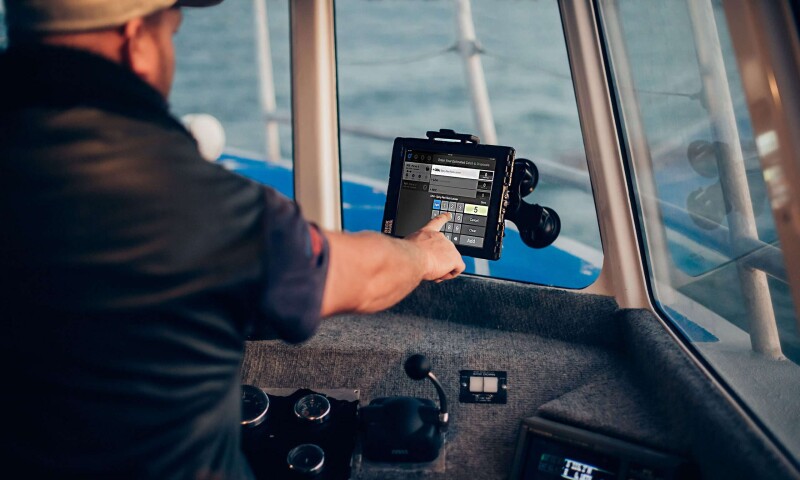Lange Solberg is stoked. As Real Time Data’s (RTD) business developer in North America, he’s seen two new rounds of investment in RTD’s Deckhand logbook platform this year that will enable his team to add 60 Alaska longline boats to the 30 already using the technology. “The feedback from the first 30 boats has been great,” says Solberg. “And now in the second year of the program we’re looking to add a cohort of another 60 boats who have been either using the paper DFL or IPHC logbook previously.”
Funding from Builder’s Vision and the National Fish and Wildlife Foundation has given RTD the resources to develop further technology that meets fishermen’s needs and regulatory obligations. “The paper requirements in the longline fishery are a fundamental pain point helping drive the shift to electronic reporting,” says Solberg. “It’s certainly easier than writing down the latitude and longitude of the beginning and end of every set, which is what they currently have to do on paper.”
According to Solberg, all that information can now be logged and submitted with the push of a few buttons. “They can do all their NMFS [National Marine Fisheries Service] and, soon, IPHC [International Pacific Halibut Commission] reporting,” he says. “But the logbook also has a lot of value-added features like Catch View, which lets you track catch per unit of effort in different ways, bait performance, and numbers of target species caught and discarded, among other things.”
Solberg also notes that the company is in the midst of a significant product development cycle. “We’re in the middle of improving how fishermen visualize all this data they collect, working on innovative features that benefit fishing businesses. And we’re working with some other companies to develop parallel tools and data sharing across multiple devices.”
Longliners in Alaska’s halibut and black cod fisheries who sign on with RTD’s program get the Deckhand Wheelhouse package, which includes an iPad with an IP67-rated case and mount for the wheelhouse. “We are positioning it as a wheelhouse essential,” says Solberg, noting that some users mount it outside the wheelhouse so they can log information while they work on deck.
“The first 60 people who sign up also get the first year’s subscription, including Catch View and Map Viewer. But as we add modules, those will likely come with an additional cost.”
Solberg notes that funding from Builders Vision— an impact platform that funds sustainable initiatives and technology in three focus areas: oceans, energy, and food and agriculture—is an investment, while the funding from the National Fish and Wildlife Foundation is dedicated to upgrading the longline software and expanding the cohort of fishermen adopting Deckhand as their electronic logbook solution in Alaska.
We’re also testing, as well as actively marketing and selling, Deckhand in other fisheries. We have people using it in the Bristol Bay gillnet fishery and the Southeast troll fishery. On the East Coast, boats in the GARFO [Greater Atlantic Regional Fisheries Office] region can send their eVTRs and use an engine log to track engine maintenance.”
Solberg notes that scallop boats and trawlers are the primary customers for Deckhand Logbook on the East Coast. “We aim to help fishermen work more efficiently,” says Solberg. “We want to help them improve their bottom line.”







